Ghost crabs (genus Ocypode) comprise 22 different species, and they are commonly also called `Sand crabs.` The scientific name Ocypode has Greek origin and means swift-footed. Ghost crabs are semi-terrestrial crabs that dig deep burrows in intertidal zones of sand. They can be found in all subtropical and tropical regions worldwide. Ghost crab comes from their swift movements over the sand during darkness and their whitish-colored claws.
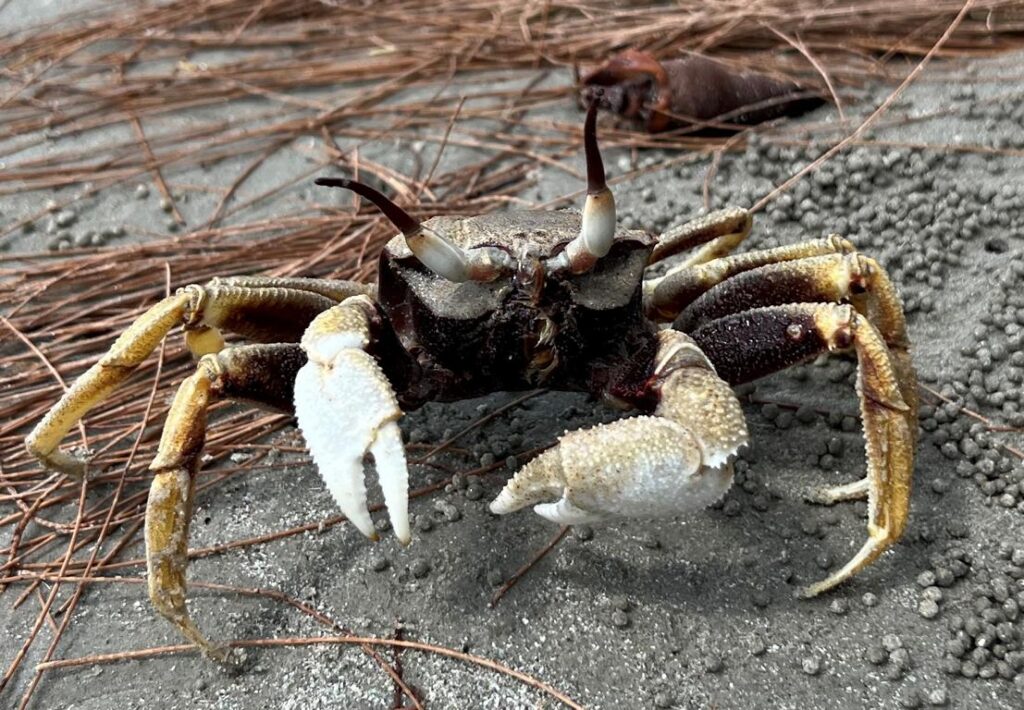
Appearance of Ghost crabs
The following three characteristics characterize all species of Ghost crabs:
- One claw is always more prominent than the other one, and both claws are pale colored (often white). The smaller claw serves to pick up food, and the larger one for crushing it.
- They have thick and elongated eyestalks that can fold below the carapace.
- Body shape is box-like.
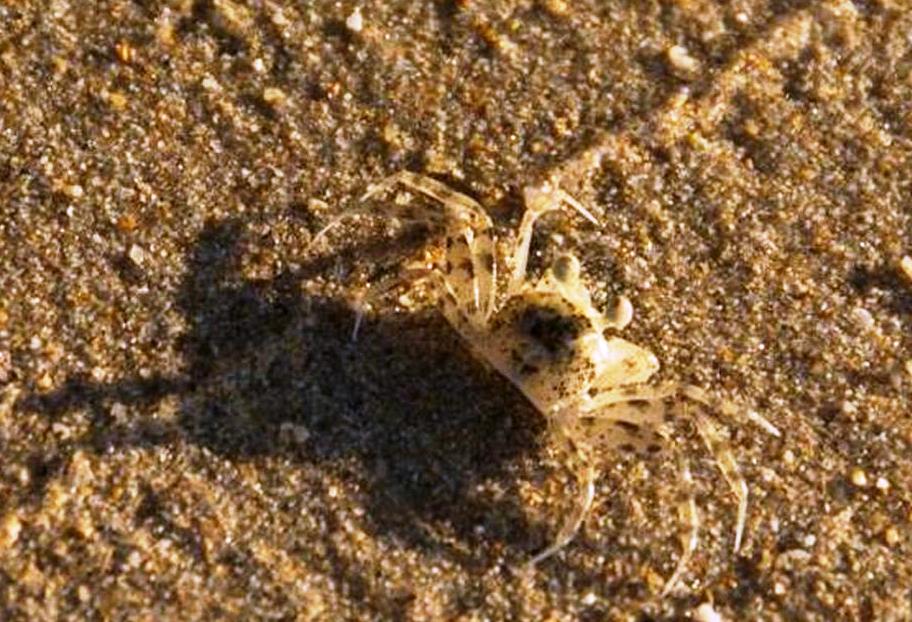

Additionally, Ghost crabs can adapt their whole body coloring to the surrounding sand colors and the time of the day, further reinforcing their name. A more detailed description of Ghost crab taxonomy, appearance, and behavior can be found at this link.
How do you find Ghost crab holes on the beach?
During the day, a Ghost crab usually stays in its resting chamber, which is located at the lower end of the entrance tunnel. These entrance tunnels have a diameter of about 1 ½ – 1 ¾ inches / 32 – 38 mm and lead at an angle of about 45 degrees down to the chamber.
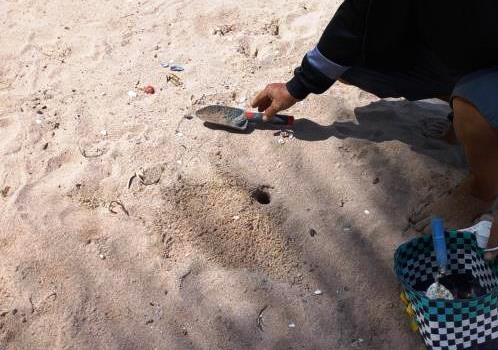
Depending on the increasing size of the residing crab, the depth of the chamber below the surface is also increasing. Generally, these chambers are located between 60 cm and 1 m / 2 – 3 feet below the surface. As the crab tries to have the resting chamber partly covered with saltwater, the further inland the entrance hole, the bigger the crab inside.
Holes on the surface with a residing crab can be easily spotted by the freshly ejected sand grains, as seen from the attached photos above.
Digging for Ghost crabs

When a live hole was found, it first—and most importantly—had to be filled with dry sand from the surface.
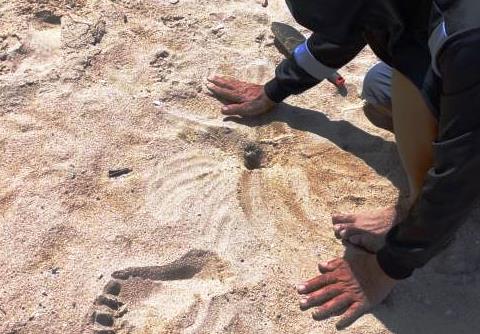
This ensures that the crab cannot take flight. Additionally, when digging, the light-colored dry sand marks the position of the hole. Otherwise, finding the right direction to the resting chamber would be difficult.


When digging, a small shovel or a piece of flat wood will help save energy. When arriving at the resting chamber, the Ghost crab will stick out its larger claw for protection.

This helps locate its legs and carapace and get a good grip on it.
How to hold Ghost crabs in hand?
Different crab species require different ways of holding them safely. Ghost crabs are relatively small and can turn their nippers far down their belly area. Therefore, never hold a Ghost crab from behind, but always sideward of the carapace.


How do you store and transport Ghost crabs?
After catching, holding these crabs in a strong fabric bag with a drawstring is safest. When opening this drawstring to add another inhabitant, great care has to be taken not to lose any existing crabs. They are just waiting for the string to get out. They are ingenious about escaping from any container that is not safely closed. And a plastic bag will be easily torn into pieces by them.
Use of Ghost crabs
These small crabs have only a small amount of meat. In Thailand, they are a prized addition to Som Tam, the famous Thai green Mango salad.
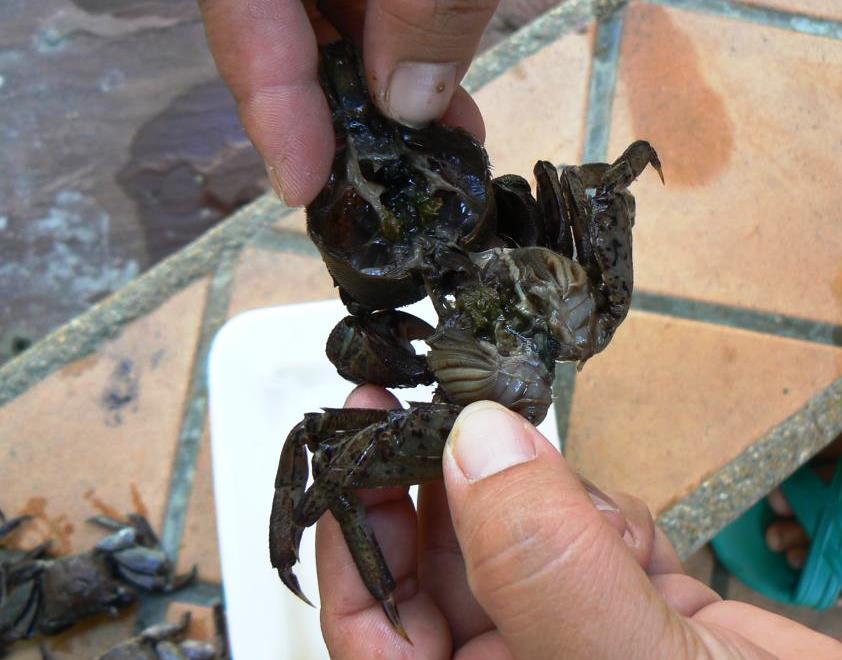
After cooking, the carapace, gills, and intestines are removed. The remains are washed, smashed, and added to Som Tam.

The pictures above show a different crab species used for this purpose, but Ghost crabs are used the same way.

Ghost crabs are also sold at some seaside markets, where they are cooked and spiced up as an ingredient in other dishes.
Ghost crabs can also be caught with a crab snare, which was described in this article.
Other marine crabs on this website can be found in these articles: Three-spot swimming crabs and mud crabs.
Lessons learned from Ghost Crabs:
- Although Ghost crabs are very swift-footed, they can be caught in their resting chamber during daytime.
- Before digging them up, the entrance tunnel has to be filled with dry sand.
- Never hold a Ghost crab like a mud crab. A Ghost crab has to be held on its sides, not from behind.
- After catching them, store them safely in a container where they cannot escape.
Further readings about Crustaceans on this website:
Spearing of African blue swimming crabs
Catching mud crabs at Koh Lanta
Three-spot swimming crabs on surf-beaten sandy beaches
Utilizing Horseshoe Crabs as a Food Source (Although Horseshoe ‘crabs’ are not Crustaceans but Merostomata)
.




